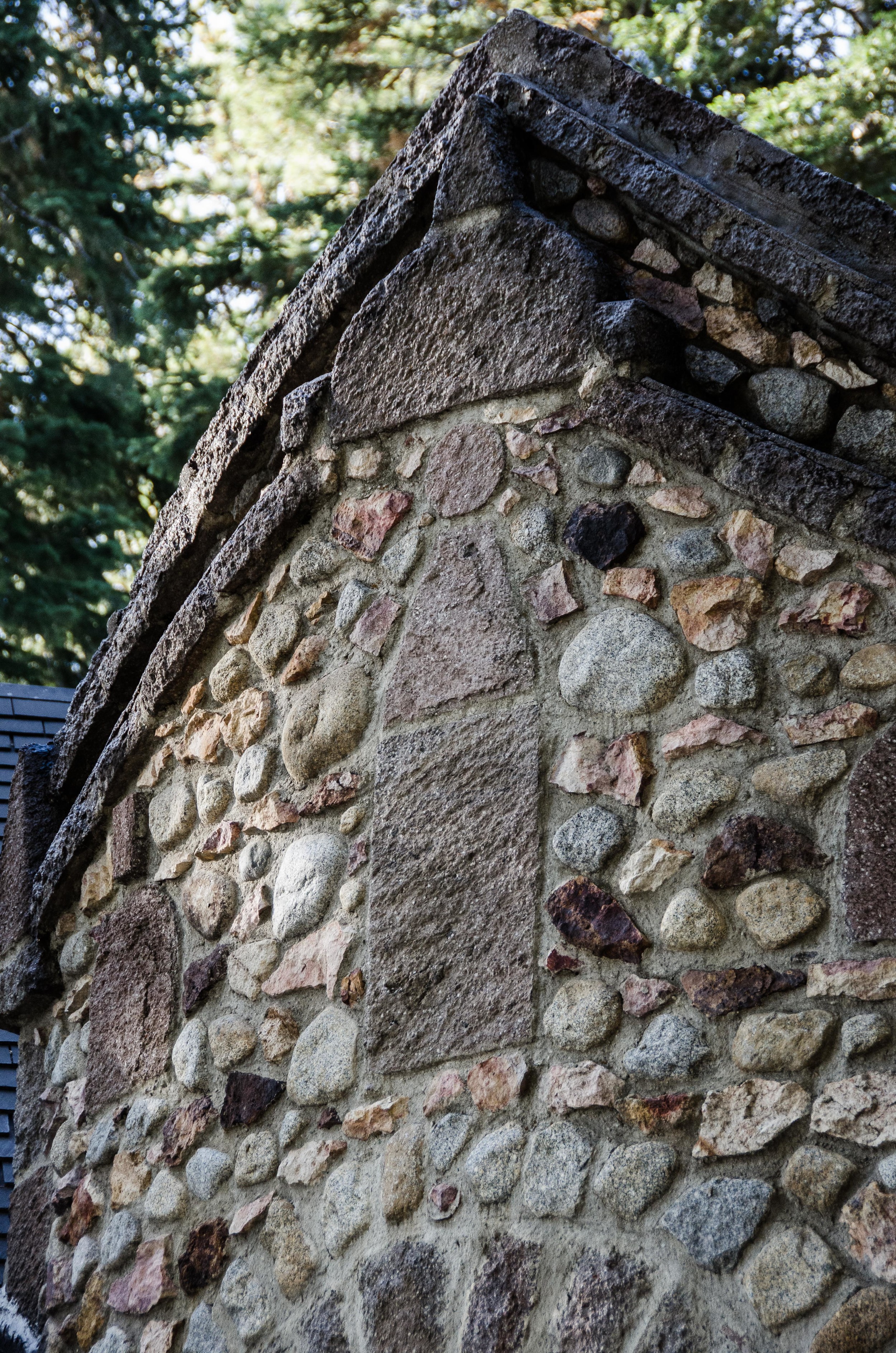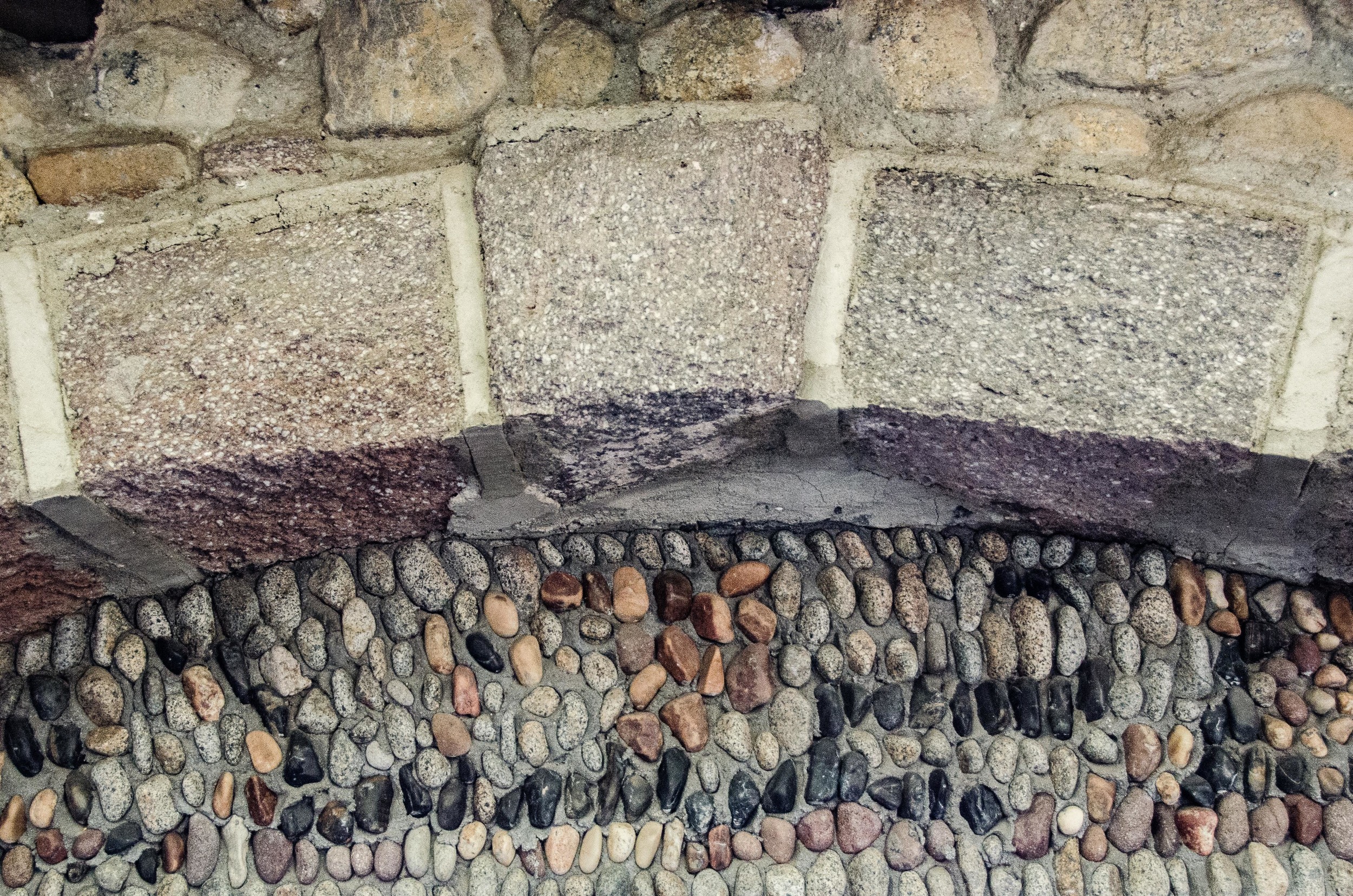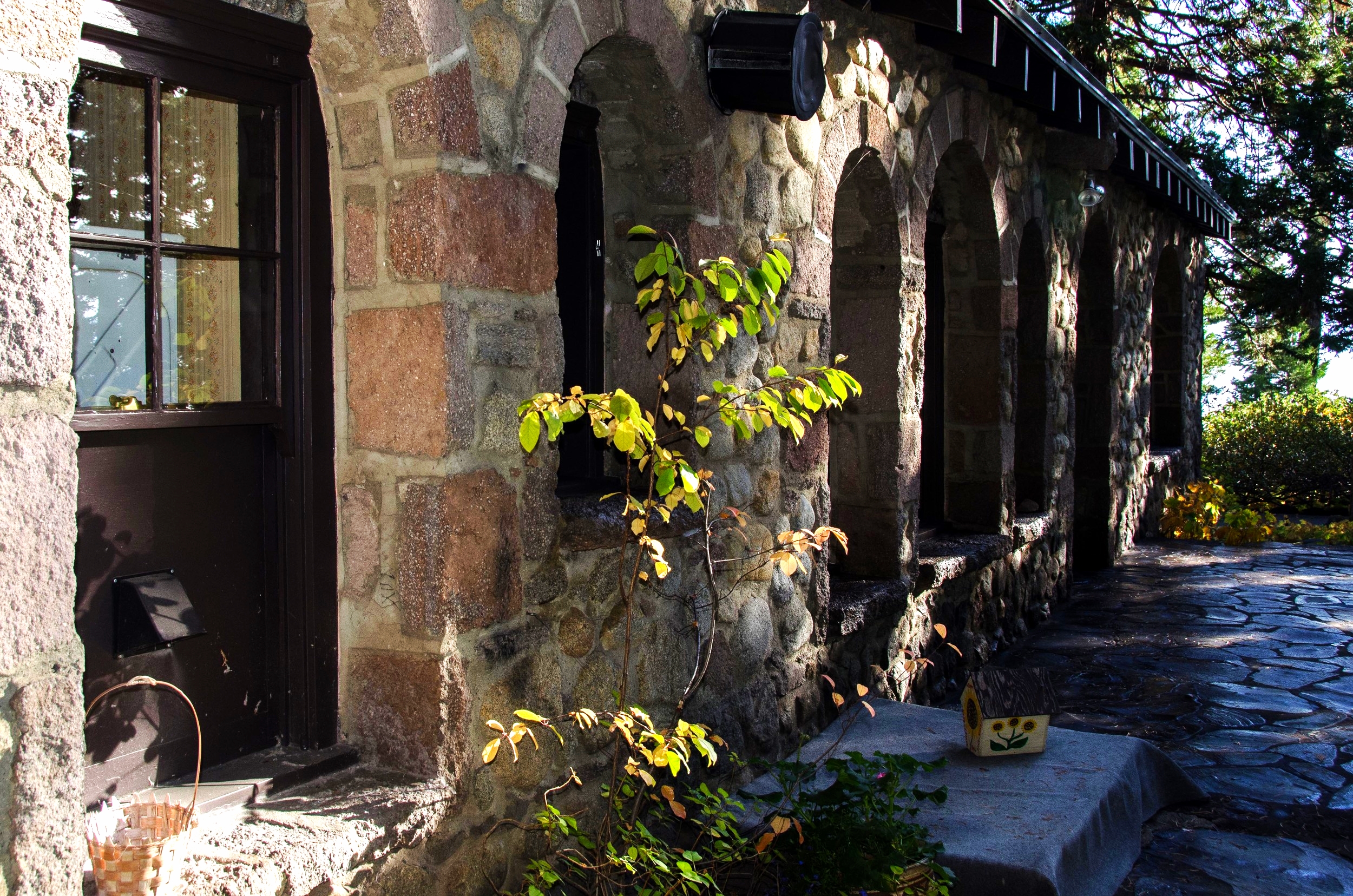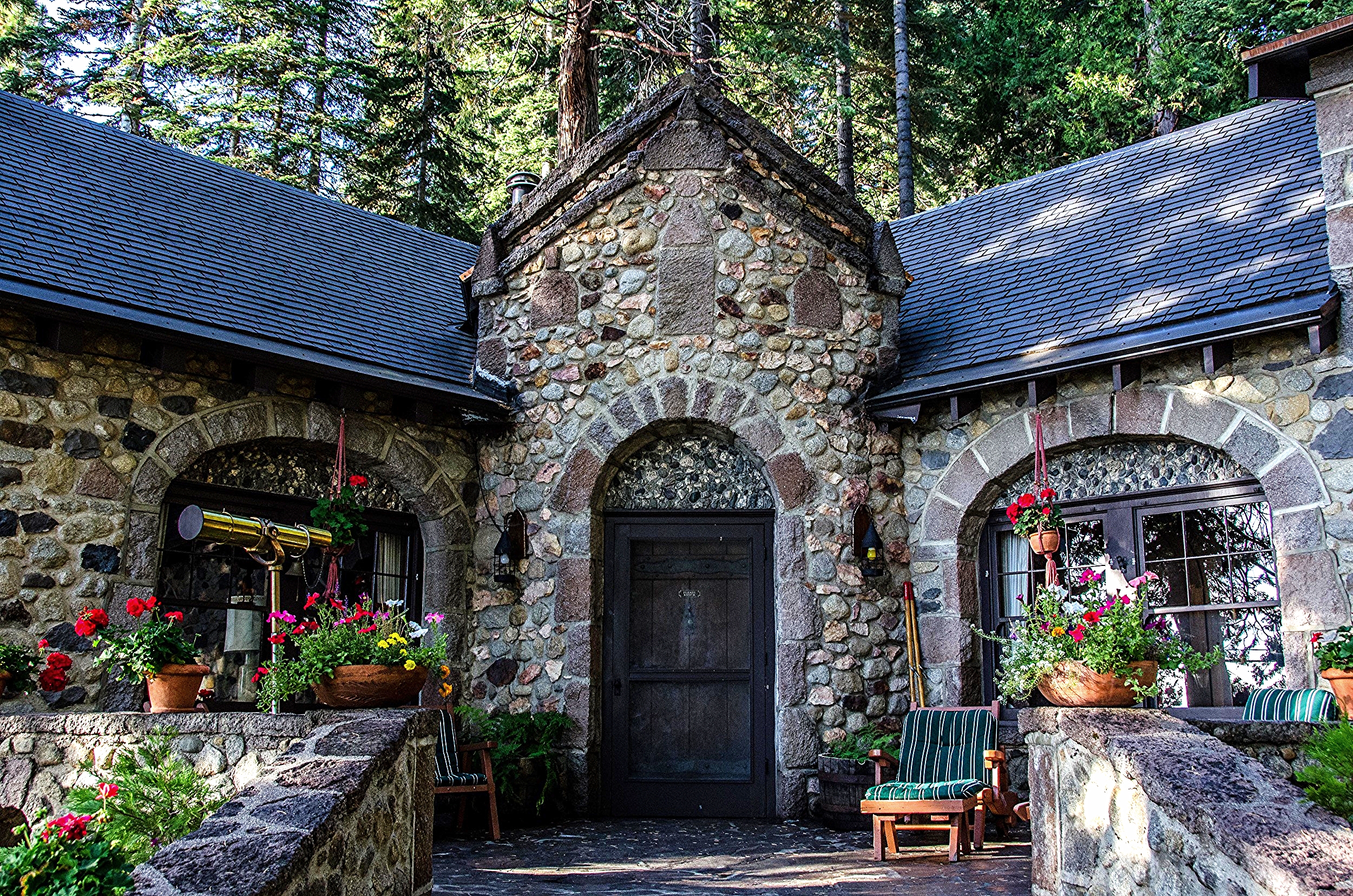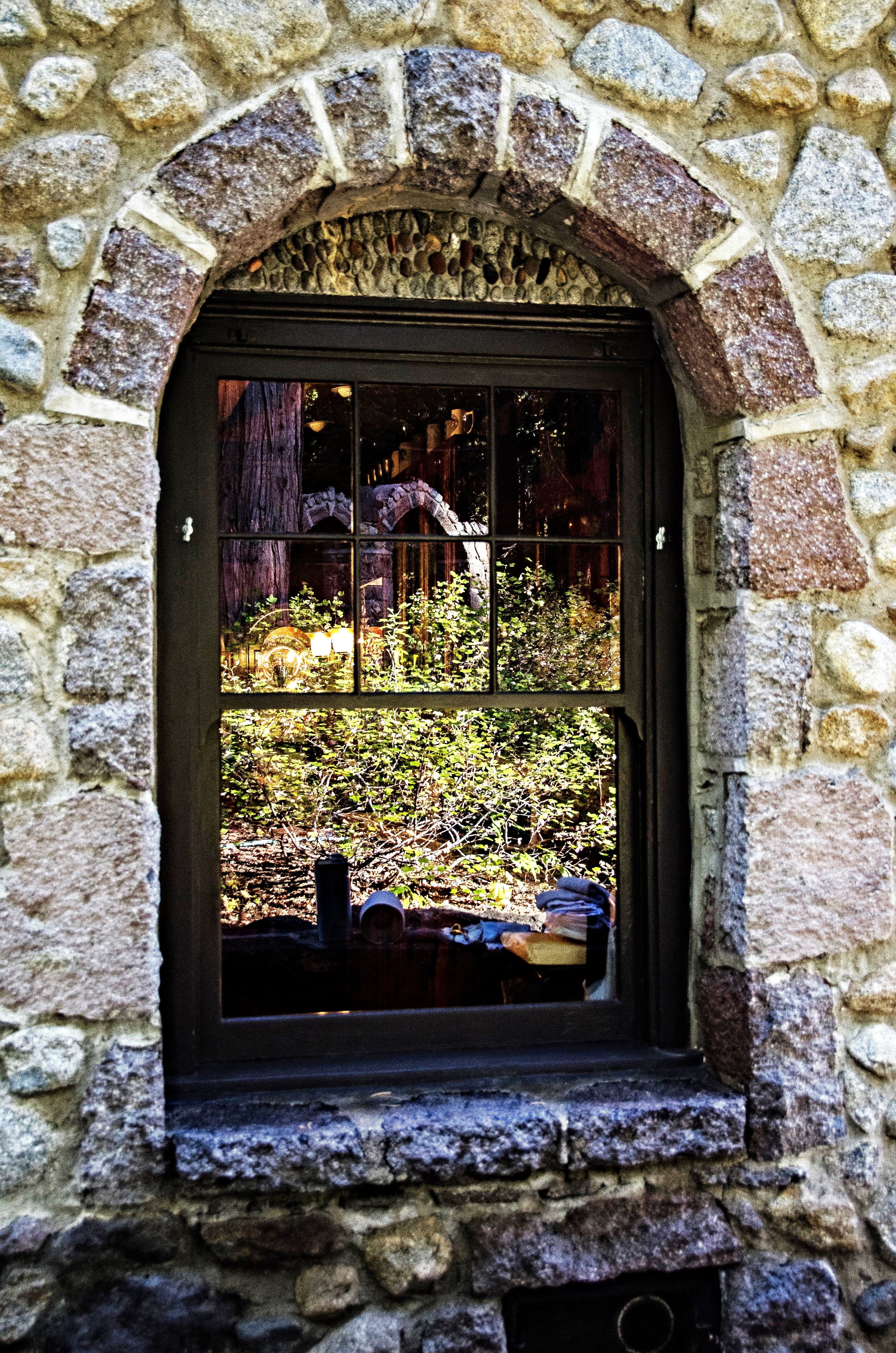Tahoe's Stone Age - San Francisco Chronicle
In the winter of '75, Lake Tahoe resident Gary Chaney learned that a 1929 house made entirely of stone was for sale on the West Shore's McKinney Bay. Having grown up with parents who renovated mansions, he liked classic old houses. That February, he went for an inspection. He found 8 feet of snow piled against 2-foot-thick walls made of Sierra granite and other rocks from the region. Boards blocked the windows.
To reach the front door, Chaney tunneled through a hole his Realtor had cleared the day before. Once inside the house, he brandished his flashlight to discover fantastic expressive details.
"The arches between rooms were Romanesque in style, and the doorway arches were pointed Gothic," he said. Walls were composed of stones and boulders and decorative pebbles of every hue and shape. A soaring chunky fireplace anchored the gable end, and the living room ceiling vaulted to 21 feet, supported by huge scissor beams.
A century ago, houses like the one Chaney explored were ideal structures at Lake Tahoe. They were cozy and didn't need much upkeep, and building materials were abundant and cheap. It's a testament to construction and material durability that many of the houses endure today in more than two dozen locations on every shore of the lake, some still owned by original family members. During the economic slump, at least four were on the market; two changed hands last year.
Who'd want to live in a cabin of stone?
A lot of people did in the 1920s, a time when small, private lots were coming on the market, and several vacationers could afford them. The homes tended to be located close to material sources, noted David Gemme, 40, a Realtor with Chase International who during a previous building career constructed two stone cottages on Ring Road near D.L. Bliss State Park. "Other mountain resort areas don't have the variety of stones we have here. There are practical advantages to it: low maintenance, the insulation barrier and soundproofing."
And the undeniable old-world ambience.
Stone houses are storyboards for the ancient geologic past, when tectonic plate shifts, volcanic flow and glacial creep were shaping Lake Tahoe's canyons, ridges and bluffs. According to Jim Howle, a hydrologist/geologist with the U.S. Geological Survey, a 2 million-year-old pinkish porphyritic andesite used in North Shore houses came from volcanic flows from Mount Watson near Tahoe City. Chimney rocks in a dapple of amber hues probably originated in even older deposits near Squaw Valley. Granite boulders found in many walls were polished smooth by glaciers or sculpted by rushing water. Decorative colorful pebbles were younger volcanic offspring washed smooth in Blackwood Canyon or on certain Tahoe beaches.
A few of the smaller bungalows contain the splashy mineral rocks of northwestern Nevada. In the 1920s, there were a couple of property owners in Zephyr Cove who loved collecting Nevada's colorful rocks, according to the granddaughter of one of them, Ginny Kish. They hired Washo, Shoshone and Paiute students studying masonry at the Stewart Indian School in Carson City to do the stonework on their new construction. In some of the homes, the distinctive mortar was blackened with carbon.
Stewart Indian School students also built the 1939 George Whittell Estate, a sprawling stone compound consisting of a card house, caretaker's house and butler cottage on the East Shore near Incline Village. The estate is now open occasionally for tours.
One stone cottage now on the market is among a trio of West Shore 1920s homes built by a stonemason from Italy named Umberto Sprellio. According to real estate broker Jeff Hurst, the house, then owned by Henry Droste, appealed to a visitor, industrialist Henry J. Kaiser, who hired Sprellio to be head mason at his own estate, now Fleur de Lac Estates, where the 1974 movie "The Godfather: Part II" was filmed.
The stone look has survived the decades, but typically now is reduced to facade ornament to reduce costs and meet newer building codes. Occasionally, contemporary builders will clad most of a timber frame house in stone, as in three recent places built by Bruce Olson (on the Truckee River), Brian Murphy (on the North Shore) and John Brink (in Lahontan). The new homes tend to contain Sheetrock interior walls. They're easy to clean but lack the Hogwarts vibe.
Maybe it was the old-world character that stirred Gary Chaney back in 1975 when he entered the old stone house for sale. Or, maybe, as Chaney likes to imply, his interest was wholly practical.
"You can't change a stone wall," he said, "but you also don't need to maintain a stone wall much. And I hate to paint."
Either way, he bought the house. In 1980, he and his wife, Lori, opened it as the Chaney House B&B. They own it to this day.
Most Photos Copyright Laura Read
